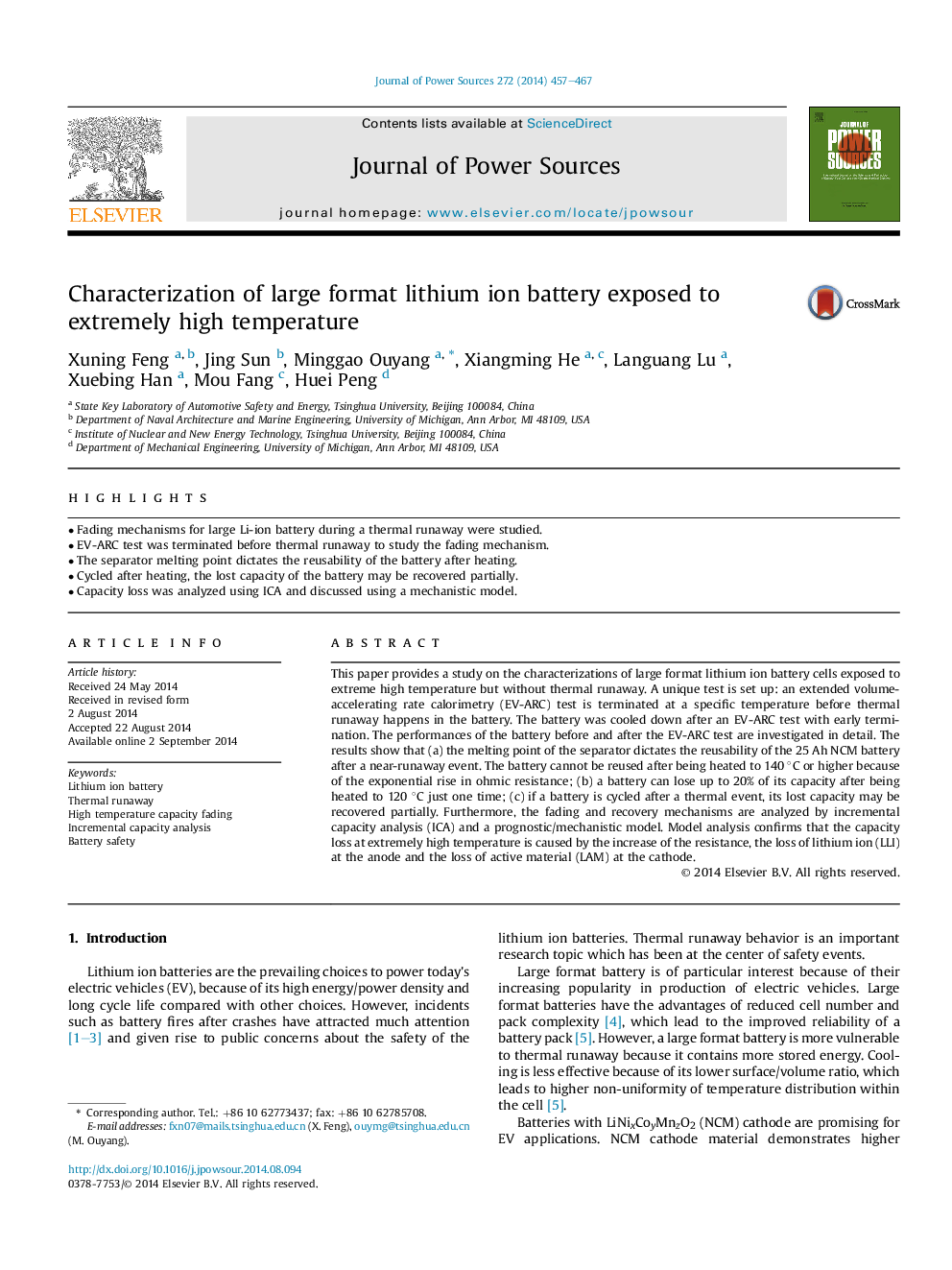| کد مقاله | کد نشریه | سال انتشار | مقاله انگلیسی | نسخه تمام متن |
|---|---|---|---|---|
| 1283990 | 1497960 | 2014 | 11 صفحه PDF | دانلود رایگان |
• Fading mechanisms for large Li-ion battery during a thermal runaway were studied.
• EV-ARC test was terminated before thermal runaway to study the fading mechanism.
• The separator melting point dictates the reusability of the battery after heating.
• Cycled after heating, the lost capacity of the battery may be recovered partially.
• Capacity loss was analyzed using ICA and discussed using a mechanistic model.
This paper provides a study on the characterizations of large format lithium ion battery cells exposed to extreme high temperature but without thermal runaway. A unique test is set up: an extended volume-accelerating rate calorimetry (EV-ARC) test is terminated at a specific temperature before thermal runaway happens in the battery. The battery was cooled down after an EV-ARC test with early termination. The performances of the battery before and after the EV-ARC test are investigated in detail. The results show that (a) the melting point of the separator dictates the reusability of the 25 Ah NCM battery after a near-runaway event. The battery cannot be reused after being heated to 140 °C or higher because of the exponential rise in ohmic resistance; (b) a battery can lose up to 20% of its capacity after being heated to 120 °C just one time; (c) if a battery is cycled after a thermal event, its lost capacity may be recovered partially. Furthermore, the fading and recovery mechanisms are analyzed by incremental capacity analysis (ICA) and a prognostic/mechanistic model. Model analysis confirms that the capacity loss at extremely high temperature is caused by the increase of the resistance, the loss of lithium ion (LLI) at the anode and the loss of active material (LAM) at the cathode.
Journal: Journal of Power Sources - Volume 272, 25 December 2014, Pages 457–467
